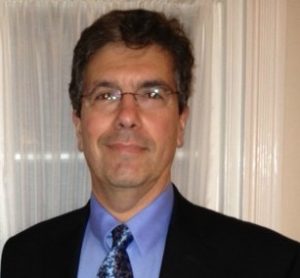 Are You Considering OCD Treatment?
Are You Considering OCD Treatment?
If you are considering OCD treatment for yourself or for someone you care about, it is important to understand what it is and how OCD treatment works.
Michael Silverstein, OCD Expert
Dr. Michael Silverstein, owner, Main Line Counseling Partners, specializes in OCD treatement, including CBT and Response Inhibition Therapy. Read on to learn more about his approach, or you may call him any time at 610-642-3359 X2 or by using the online scheduling calendar at the bottom of this page.
What is OCD?
Obsessive-Compulsive Disorder (OCD) is a common mental disorder, affecting approximately 1% of the U.S. population in any given year. Half of these cases are considered “severe”, and symptoms can manifest at any time during the lifespan, from childhood to older age, with average age of onset at about 19 years-old.
OCD can significantly interfere with daily living by absorbing so much time and energy that it negatively impacts work, school, family and other interpersonal relationships. At the more severe levels, OCD can take up valuable time to the point where it becomes difficult to get work done or interact with others.
Obessive-Compulsive Disorder is on a Continuum
Like most mental and physical health problems, symptoms can range on a continuum from mild to severe. In a sense, we all have “OCD” moments that do not qualify as a mental disorder. For instance, if you have ever had a strong urge to double-check whether you locked your front door or remembered your phone, you’ve experienced such a moment. You probably clearly “know” in your head that you remembered these things, but can’t quite relax until you’ve checked.
However, those formally diagnosed with OCD may become depressed, experience resentment from significant others, worry that they’re “going crazy”, or develop physical problems in addition to the anxiety and agitation they experience.
For instance, someone may wash, brush their teeth, or comb their hair to the point that they develop lesions, sores or infections on their skin, scalp or gums. Long term, the stress of trying to manage the symptoms, like any kind of chronic, long-term stress, may lead to high blood pressure, heart disease, chronic tension and pain, skin conditions such as psoriasis, as well as exacerbate other illnesses by depleting the immune system.
You Are Not Alone if You are Experiencing these Symptoms
Howie Mandel has been very open about his OCD and done an immense service in raising awareness about OCD and that there is no shame in seeking treatment. Other celebrities with OCD include:
- Cameron Diaz
- Leonardo DiCaprio
- Justin Timberlake
- Katy Perry
- Harrison Ford
- Donald Trump
- David Beckham
- Charlize Theron
- Howard Stern
- Jessica Alba
- Harrison Ford
Famous historical figures whom historians believe may have had OCD include:
- Ludwig van Beethoven
- Charles Darwin
- Albert Einstein
- Charles Dickens
- Stonewall Jackson
- Howard Hughes
So What Exactly are Obsessions and Compulsions?
OCD is made up of two components, obsessions and compulsions, and you can experience either one without the other.
Obsessions are frequent, uncomfortable, worrisome thoughts, sometimes referred to as rumination, which the sufferer usually knows is irrational but cannot control.
Compulsions are ritual behaviors, often repetitive, that there’s a strong sense of urgency to complete and which causes discomfort and agitation until they are. Again, the sufferer may experience them as irrational or nonsensical but nonetheless feels powerless to control.
Both obsessions and compulsions may impact not only the individual experiencing the symptoms but also family members and friends who feel pressured to change their own behavior to help or feel frustrated by their inability to do so.
When a person has both Obsessions and Compulsions, the compulsive behaviors are what the sufferer feels compelled to do in order to stop the obsessive thoughts. Common examples include having to wash hands in order to stop worrying about germs, difficulty shaking hands for fear of exposure to germs or thinking that the house will catch on fire unless the stove is checked over and over.
While symptoms can wax and wane in severity over the lifespan, the disorder typically remains chronic if it isn’t treated. Symptoms tend to be triggered or exacerbated by stress. Historically, OCD has been considered an anxiety disorder but more recent research suggests that while anxiety may trigger or exacerbate the symptoms the disorder itself is a separate, neurological condition.
Examples of OCD
OCD is different for everyone, and can manifest in many different ways with many different kinds of obsessions and compulsions. Here is a list of a few examples
- Irrational fear of dirt and germs
- Excessive need to organize or arrange objects in a specific way
- “Checking behavior” (e.g. doors or windows closed or locked, appliances turned off)
- “Counting behaviors (tiles in the floor, specific spoken words, performing specific behaviors)
- Constant doubts despite reassurance
- Having to perform daily activities in a ritualistic way
- Excessive use of cleaning agents (soap, hand sanitizer, detergent, household cleansers)
- Handwashing, showering
- Unrealistic and excessive fear of injury, illness or “bad things” happening to self or others
OCD Treatment
The good news is that OCD can be very effectively treated with a form of relatively brief, intensive Cognitive Behavioral Therapy (CBT), medication or both.
One of the barriers to OCD treatment has been feelings of embarrassment or shame that the sufferers often experience. Hopefully, as with many illnesses, education and awareness is helping reduce those reactions so people can get the safe and effective treatment that they need.
The Effectiveness of OCD Treatment
Both CBT therapy and medication has been shown to be equally effective, with 70% – 80% of clients improving. While full remission is often achieved, the average reduction in symptoms utilizing CBT ranges from 60%- 80%, while with medication the average amount of symptom reduction is 40% – 60%. While earlier research did not find any improvement by combining the two treatments, some more recent studies have found that combining the two may provide further symptom relief for more severe or resistant cases. One of the major differences between the two forms of OCD treatment is that there is a higher rate of relapse (return of symptoms) at six months and one year after treatment with medication as opposed to CBT.
What To Expect in OCD Treatment
The central component of therapy is exposure. Essentially, clients with OCD are coached in exposing themselves to the situations that trigger the obsessive anxiety while actively inhibiting the compulsive response. This is accomplished within the context of a supportive, safe and collaborate relationship between client and therapist, with structured exercises and practice between sessions. In addition to the individual therapy component, eliciting the help of family or support groups can play an important role in recovery.
The treatment has three main stages: assessment, exposure and relapse prevention. Assessment involves confirming the diagnosis and determining whether there are any additional mental or physical health factors (“co-morbidities”) involved as well as measuring the frequency and intensity of the symptoms. This stage might also include involvement by family members or significant others to help them understand the illness and how they may best support the client.
During the next stage, the client learns and practices exposure and response inhibition. Client and therapist begin by developing a hierarchical list of situations that trigger symptoms. The client then gradually exposes themselves to an increasing level of symptom severity while actively inhibiting the behaviors or rituals that reduce the agitation, anxiety and other symptoms. Of course, treatment never involves doing anything that is actually physically dangerous or harmful, however the practice obviously involves a level of discomfort as the client confronts fearful stimuli.
An example of the exposure phase might include purposely touching something dirty or without washing it off, eating sticky, stinky or foul tasting food without brushing teeth, or sitting for a period of time with messy and disheveled hair. Friends and family may help support the client staying with the experience, but for the treatment to work anxiety must be experienced.
Older treatment modalities such as relaxation exercises, meditation, insight, venting or distraction are ineffective in the treatment of OCD, although may be very beneficial for associated or additional goals such as stress management, problem-solving or treating depression.
Benefits of OCD Treatement
Improvement with CBT is often seen within one to two weeks, with full treatment gains typically achieved within 12-20 sessions. The final stage, relapse prevention, is focused on monitoring and managing stress that may trigger a return of symptoms and what to do if there is a relapse. It is important to note that if there are other, associated psychological issues that have developed along with, as a result of, or prior to the OCD these may require additional therapy.
OCD Medication
Medications are also effective OCD treatment, either in conjunction with CBT therapy or independently. The most commonly used medications for OCD are the SSRI’s, including Paxil (Paroxetine), Lexapro (Escitalopram), Zoloft (Sertraline), Prozac (Fluoxetine), Celexa (Citalopram) and Luvox (Fluvoxamine). There are other classes of medication that can also be effective. Please note that medications can only be prescribed by a licensed physician or, in Pennsylvania, by a nurse practitioner or physician assistant, and not by a psychologist or masters level clinician.
The full benefits from medication is usually achieved within two to three months, but there is a 90% chance the symptoms will return at full intensity when medication is stopped while with CBT benefits have been shown to continue for at least one year following discontinuation of treatment. Others pros and cons are that SSRI’s may produce distressing side effects, but only require taking a few pills once or twice per say while CBT requires a large commitment of time and energy to practice the exposure exercises daily.
What to Do Next

It can be intimidating to ask for help, but the best next step is to schedule a phone consultation with Dr. Michael Silverstein. This is a free conversation with no commitment to schedule an appointment. He can help you decide if OCD treatment is right for you. Choose a time below to schedule a free phone consultation, or call him directly at 610-642-3359 X2.
For More Information About Dr. Silverstein and his Approach
Cognitive Behavior Therapy (CBT)
On-line resources for OCD:

 Are You Considering OCD Treatment?
Are You Considering OCD Treatment?